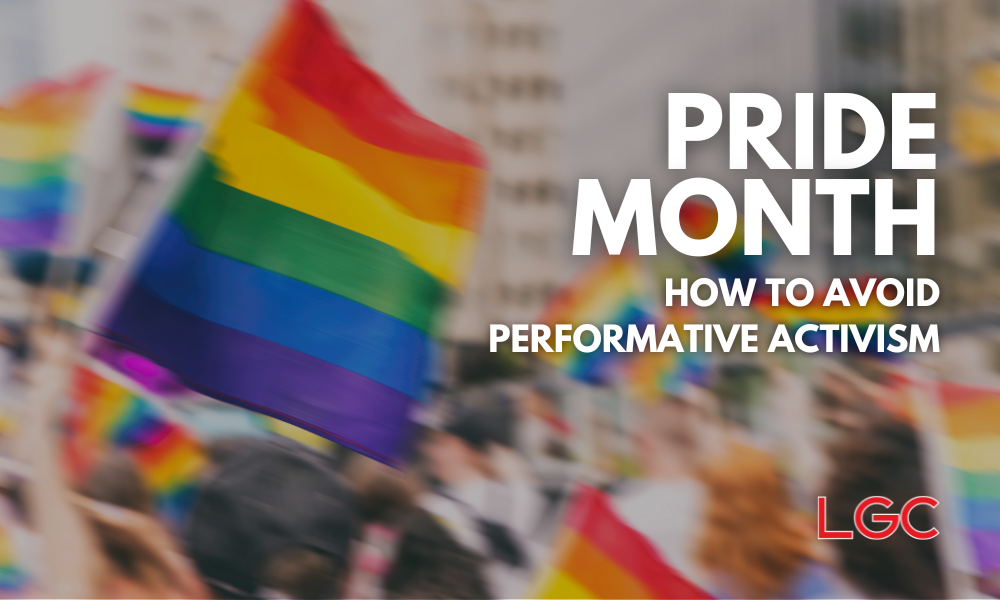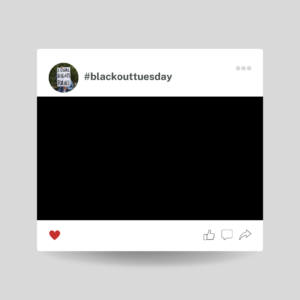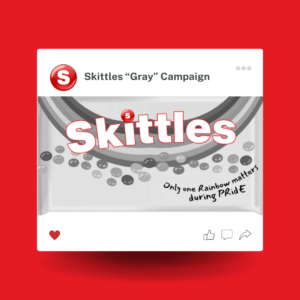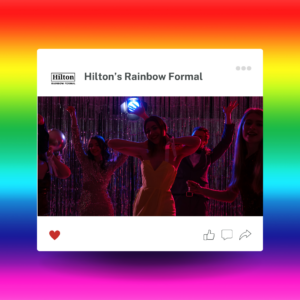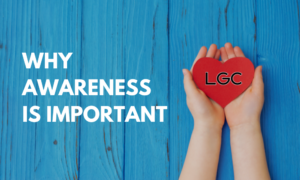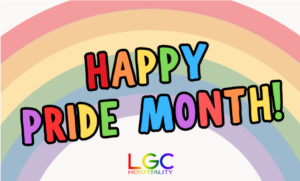Back in 2020, we saw a surge in businesses prioritizing social justice in their social media campaigns. Unfortunately, not all campaigns are good campaigns. Some do more harm than good. In any advocacy work, it’s important to be genuine, listen more than you speak, and stick to your message.
Businesses that launch efforts for advocacy but have no action behind their words are often called “performative.” This is a dangerous umbrella to find yourself under as it can drop your credibility significantly. So, how do you avoid performative activism? What does it look like and how can you do it correctly?
As June is PRIDE month, there are good and bad ways to support the LGBTQIA+ community. Let’s dive into what performative activism is, how your business can avoid it, and some examples of PRIDE campaigns done well.
What is “Performative Activism?”
The term can be defined as “a form of activism used to increase one’s social capital or personal gain rather than genuine support towards a movement, issues, or cause.” This definition, written by Petiri Ira, a writer for The Medium, centers around the surge of performative support by social media users back in 2020 at the height of the Black Lives Matter movement.
If you were on Instagram in 2020, you probably remember an oversaturation of black squares populating your timeline (over 28 million to be exact). While this campaign started with good intentions, it quickly took a turn for the worse. Trends have immense social power, and that’s what the black square was. It showed that you or your business was an “ally” without having to do any of the actual work to earn the title. This is the central issue with performative allyship campaigns.
Allyship is instrumental in enacting real change, but in order to provide value to a movement it must be beneficial. The key issue with the Instagram blackout was that it pushed all the content that advocated for real action out of people’s feeds. Instead of lifting up the voices that were being silenced, it spoke over them. If your allyship does not center around the people you are advocating for, you are likely going to do more harm than good.
So how can you make sure you stay on the positive side of change?
How to Avoid Performative Activism
“Actions speak louder than words” is the most effective motto to keep in mind when you are planning a campaign for PRIDE month or any other social justice movement. In other words, if you are putting something into the world so people will believe you are for the movement, but you still have policies in place that are against those people, your actions do not match your words.
Here are a few ways you can make sure you’re being a part of the solution and not the problem:
- Elevate voices in the community you are supporting: For your PRIDE campaign, try partnering with LGBTQ+ creators or artists to release exclusive products during the month of June. Not only are you supporting local creators in the community, you will have a unique collection of products that you can sell. To take it one step further, with the profits you receive from these sales, it would be beneficial to donate a portion to an organization that fights for the rights of the LGBTQ+ community such as The Trevor Project.
- Do the internal work: Set clear DEI goals and keep track of where you can continue to improve. Make an inclusive environment a priority, and stick to it when a challenge arises. Try implementing allyship training and anti-discrimination policies to make sure that bias isn’t tolerated.
- Listen to the needs of the community: If you’re going to launch a full fledged marketing campaign for PRIDE month, stay in the loop about their current issues and develop your efforts in response to those issues.
- Don’t pull away when it gets hard: One of the worst things you could do is react to criticism by packing up and calling it a day. Marketing is public, social media is public. People will have opinions about your stance as a brand. If you are unprepared to face criticism for supporting the LGBTQ+ community, think about sitting this one out.
Allyship done right
What’s amazing about allyship is there isn’t a right way to lend your support. There are many companies who have launched amazing, creative campaigns that lift up the LGBTQ+ community in unique ways. Here are 3 businesses that you can use as a guide for what positive allyship looks like.
Skittles Gray Campaign (2020)
Everyone knows Skittles are associated with the rainbow. Not in June of 2020 though. For the month of June, Skittles decided to “go gray” and let LGBTQ+ artists embrace their rainbow. They partnered with GLAAD, a non profit LGBTQ+ organization, and 6 LGBTQ+ artists whose designs painted the front of Skittles bags all over the world. Not only that, but the Skittles inside the bag were also gray so that the rainbow designs were front and center.
This campaign worked because the company took a step back and let people of the community shine instead of speaking over them.
IKEA #Facethegap (2023)
For the past few years, IKEA has sold rainbow bags and donated 100% of the profits to local LGBTQ+ organizations in the UK and Ireland. In 2023 however, they turned their focus internally. Their global survey was sent to all employees and the results showed that 81% of LGBTQ+ employees felt comfortable to be themselves at work but 24% said they didn’t feel a sense of belonging. Their #Facethegap campaign was a detailed plan to close the inclusion gap by launching internal resource groups to create a safe space for workers, increasing representation on all levels of the organization, focusing on safe wellbeing, and partnering with organizations including Stonewall and Global Butterflies.
This internal campaign is an amazing example of how to turn your work inwards when you receive feedback that you need to improve in some way. Listening to the community should be central in any activism campaign, and this is a great example of how to do that effectively.
Hilton’s LGBTQ+ Rainbow Formal (2023)
In a world where heterosexuality is the norm, one of the places LGBTQ+ youth can feel the most out of place is at a school dance. In 2023, Hilton decided to do something about that. In Australia, Hilton ballrooms are one of the more popular places to hold school formals. So, in response to LGBTQ+ youth not feeling safe to be themselves with their partners, they opened their doors for Queer inclusive formals. They partnered with Minus18 and Kvur to work with LGBTQ+ celebrities and voices to help advertise and get the Rainbow Formal up and running in just under 6 weeks.
This campaign is notable for a couple reasons. Firstly, school dances are considered a rite of passage that many queer individuals do not get to experience in positive ways due to discrimination. Hilton saw this need and decided to do something about it by leveraging their platform for good and opening their doors as a safe haven. Secondly, partnering with an impactful local organization and collaborating with an LGBTQ+ celebrity, gave queer youth a role model to look to for representation.
Allyship should not be a mountain to climb, not if you’re executing it in the right way. It might be stressful along the way, but in the end you’re going to do amazing work for communities who need the support. Whatever you do, don’t fake it or do it for social capital. Take PRIDE in your campaign and stand with the LGBTQ+ community this month.
Check out our other PRIDE articles and more:
Keep up with us on our social media!
About LGC
Since 2003 LGC has been building connections between businesses with staffing needs and job seekers looking for new opportunities. Our range of solutions includes temporary and permanent placements (and everything in between) for a variety of industries. With offices located nationwide, we can tap into a dynamic pool of talented professionals. We have a passion for creating partnerships that last and work hard every day to ensure both clients and candidates reach their employment goals.

